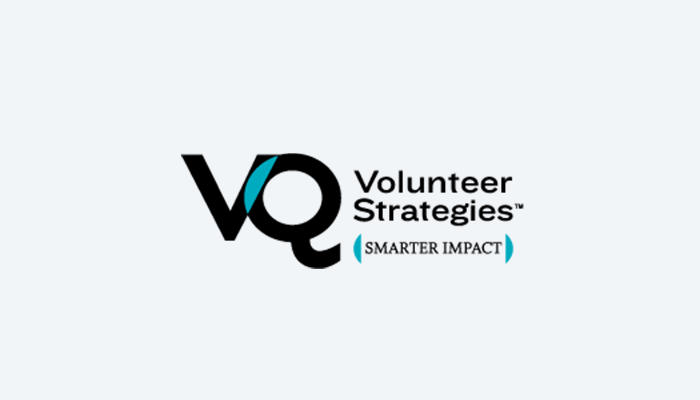Nonprofit Volunteer Recruitment: Overview + Top Strategies
Volunteers are the lifeblood of nonprofits, offering their time, skills, and passion to drive missions forward. However, attracting (and retaining)...
3 min read
 Beth Steinhorn, President, VQ Volunteer Strategies
Jul 12, 2023 6:00:00 AM
Beth Steinhorn, President, VQ Volunteer Strategies
Jul 12, 2023 6:00:00 AM

Around the globe, volunteers help organizations achieve their mission. And yet, volunteer engagement is often complicated by widely held myths. As leaders of volunteers, you have the opportunity (and, perhaps the obligation) to correct these misconceptions so that you can more effectively harness the talent of the abundant resource you lead, namely volunteer talent!
Here are five common volunteer engagement myths we see in our work across North America and some tactics you can use to fully embrace your role as “Mythbuster.”

For decades, the industry standard for communicating the value of volunteer involvement has been tracking the number of hours volunteers contribute each year and translating those hours into a perceived dollar value based on national or local values for each hour. While this approach can be useful in some scenarios (e.g., reporting in-kind contributions in grant reports), it also can be problematic, as outlined by Dr. Sue Carter Kahl in this useful analysis as well as by others.
The issue is this: Hours and dollars measure only quantity, not quality. They give no indication of the impacts volunteers have, such as people served, meals distributed, animals saved, or legislation passed. Volunteers don’t serve because they want to reach a quota of hours; they volunteer to make a difference for a cause they care about. Tracking hours tells nothing about whether they’ve succeeded in making that difference. Moreover, as described by Carter Kahl, “Reporting volunteer hours is a telling practice that communicates what we value. It reveals, for example, that we prize volunteer quantity. That we celebrate volunteer volume.”
So, what does your organization value? What information will reveal how volunteers extend your organization’s reach? Enhance people’s wellbeing? Ultimately, bring you closer to mission fulfillment? Collect that data and those stories, celebrate them, and, in doing so, you will bust the myth that success is measured in hours and dollars.

All too often, leaders consider volunteer engagement as a no-cost strategy. But just because the volunteer workforce is unpaid does not mean that engaging them takes no investment. Quite the contrary. Organizations that engage volunteers meaningfully can do so because of their investments in strategic engagement – investments which extend well beyond recognition gifts. They invest in staff to lead the strategy, training both volunteers and the staff who support them, technology, background checks, equipment for volunteers to carry out their work, and meaningful recognition.
Leaders who perpetuate the myth that volunteers are free can unwittingly increase staff concerns about being replaced by volunteers to save costs, whereas those who are willing to invest in volunteer engagement promote the belief that volunteers partner with staff to extend capacity.
You can help bust this myth by talking about the investments needed to engage volunteers. Expand discussions beyond financial value of volunteer contributions to, instead, return on volunteer investment, which compellingly communicates the return on every dollar invested in volunteer engagement.

While it’s common for leaders to talk about a “volunteer program,” this terminology can be misleading. When volunteers are considered a “program,” they are viewed as “program participants” and, consequently, can be pitted in competition against other program participants for resources. Conversely, when volunteer engagement is presented as a strategy, then volunteers are partners with staff to achieve mission and can be tapped in all areas of operations.
Here's how you can bust this myth and influence how your organization embraces volunteer engagement as a strategy:

Recruitment is a challenge. According to VolunteerPro’s 2023 Volunteer Management Progress Report, recruitment is the #1 challenge reported by volunteer managers across the globe. Unsurprisingly, many are striving to fill open volunteer positions by doubling down on tried and true recruitment methods – online postings, volunteer incentives, and beseeching the same dedicated volunteers to increase their already heavy commitment. But more of the same won’t work this time.
Rob Jackson compellingly explained in a recent post, “… if the roles we want volunteers to do aren’t flexible and impactful enough, then however well-crafted and fancy looking our recruitment campaign is, we will struggle to engage new volunteers…. In a cost-of-living crisis, if we don’t make available the funds to reimburse volunteer expenses, then people won’t volunteer because they simply can’t afford … to subsidize our work.” And, ultimately, Jackson notes, “For our organisations to succeed at volunteer engagement post-lockdown, we need systemic change.”
As a leader, you can bust the myth that recruitment alone is the panacea by launching conversations about the changing landscape of volunteerism, the need to reduce barriers to volunteering, and other systemic issues that make engaging volunteers challenging in this new world. This leads to Myth #1.

The world is ever changing. Yet, many of the shifts believed to have begun in 2020 as a result of the global pandemic were, in fact, accelerations of trends that were already in play (read more in Transforming Disruption to Impact: Rethinking Volunteer Engagement for a Rapidly Changing World). In other words, while organizations launched virtual volunteer opportunities in record numbers in 2020, engaging volunteers virtually was nothing new, nor were the challenges that large corporate volunteer groups can pose or inequitable access to volunteering. The disruptions of recent years forced us to pause and rethink how we engage volunteers, and, together, we must harness this spirit of new ideas and collaboration to continue to reinvent the opportunities for volunteers to serve. Volunteers may have returned to in-person service, but that does not mean they are returning to 2019 – and neither should we.
Featured Posts

Volunteers are the lifeblood of nonprofits, offering their time, skills, and passion to drive missions forward. However, attracting (and retaining)...

This Month's SelectionWho Moved My Cheese, by Spencer Johnson, M.D.The seventeenth in a series of Better Impact Book BitesA taste of great books...

Volunteering New Zealand is the New Zealand peak body for volunteers and volunteering. With a wide-ranging membership of national organisations, it...